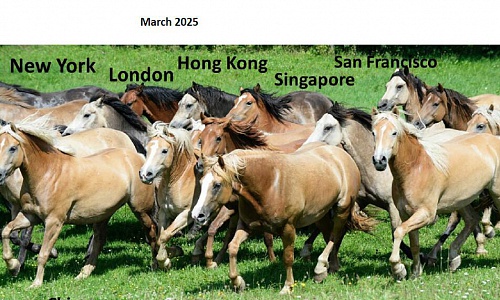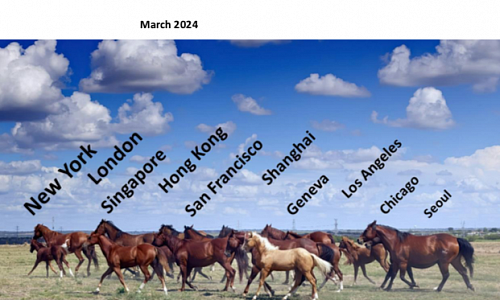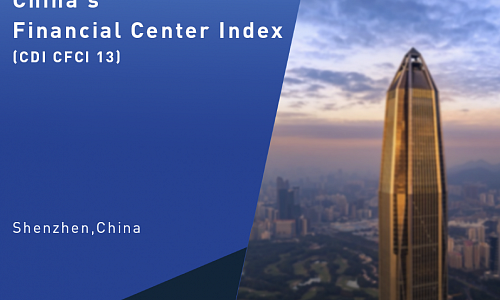
Insights
 Author: Fan Gang, President, CDI
Author: Fan Gang, President, CDI
Editor’s Note: China’s low levels of consumption can be partly explained by the fact that consumption accounts for a rather small share of income, with China’s current household spending representing only 40% of GDP and the combined spending of government and consumers accounting for only 55% of GDP, and partly by high savings rate. In 2007, the national savings rate reached a record high of 51%. In recent years, despite efforts to reduce the proportion of savings and increase consumption, the national savings rate remains elevated at around 45%. Aside from household savings, corporate savings and government savings also matter. Corporate savings usually refer to profits that are not spent. Deposits of some large SOEs may total up to tens of billions of yuan, and yet they choose to save them with the SASAC (State-owned Assets Supervision and Administration Commission) rather than share the dividends or turn them over to the national treasury. Therefore, over the past decade, money has added up in bank accounts. And one motive behind the Belt and Road Initiative is to tackle high savings rate. China’s consumption is actually suppressed against such backdrop.
Drivers for Consumption Growth
Income growth is the most important driver for consumption growth. Countries with high consumption must also be high income countries. China is still a middle-income country with per capita GDP of 8000 dollars, while the per capita GDP of the United States is over 50,000 dollars, and that of Norway is 100,000 dollars, which ranks 1st in the world. As a developing country, China’s consumption surely needs to become stronger. An increase in earnings among people with lower income, who demonstrate higher elasticity of consumer demand, will contribute to faster consumption growth of the society as a whole.
Credit consumption and finance are also driving forces behind consumption growth, which have seen rapid growth with the development of P2P platforms and Internet finance. Online mobile phone purchased by university students constitutes a short-term small consumer credit. China's consumer credit has surpassed industrial loans to become the largest sector in the banking system with 26% of share.
E-commerce has also fueled consumer spending. Presently, delivery reaches not only urban areas but also the countryside. These delivery vehicles are loaded with consumer goods.
Patterns of Consumption Growth
First, though the Chinese appetite for material consumption is far from been satisfied, service consumption has begun to grow. With growing income, people begin to have more disposable income to spend, with the consumption of physical goods seeing the fastest grow that the moment. Meanwhile, service consumption has begun to see substantial growth as well. The service industry has become the largest industry in China today. Transformation from diversified consumption to the service industry is taking place and gaining momentum.
Second, traditional consumption and new types of consumption are both on the rise. Basic needs such as those for housing and family life have not been met. 70% of the Chinese are the low-income class, of whom 34% are farmers. As their income grows, many of them will first try to meet their basic needs, thus generating great market potential in traditional consumption. An important driving force behind this process is urbanization, which obviously is related to the property market. As people migrate, their housing needs change accordingly. Farmers want to buy houses in the county as they move in from the countryside. County residents prefer to live in prefecture-level cities, as those in prefecture-level cities seek personal development in provincial capitals, whose residents decide to try their fortunes in megacities. As the country urbanizes, its people are moving from one house to another.
In a way similar to housing, the consumer market follows where people move. During the urbanization process, new types of consumption, such as consumption of entertainment, culture, health and education are also growing faster and the share of the service industry will be even larger. According to the big data provided by international credit card companies, the growth of high-end service industry is the future trend, while the consumption of goods will be more diversified, refined, functional and ritualized, which will inevitably create a lot of demand, such as people’s demand for professional sportswear.
Finally, it is worth noting that China's retirement consumption has just begun. With an aging population, there is still a long time between retirement and old age requiring elderly care. Perhaps people will begin to need elderly care only in their 80s. If they are 60 years old now, there will still be 20 years ahead to enjoy and to consume before old age. China’s new-generation retirees are just emerging, who, benefiting from high economic growth brought by reform and opening-up over the past 30 years, have become China’s middle class. Before retirement, many of them have money but little leisure time, but now as they have both, the party of retirement consumption will begin.
 Author: Qu Jian, Vice President, CDI
Author: Qu Jian, Vice President, CDI
Editor’s Note: Overseas economic and trade cooperation zones have become important vehicles and platforms for Chinese mainland companies investing oversea and building relationship with foreign partners. Hong Kong's strength as an international finance center with an open market in the scope of specialized services, from financial investment to logistics and shipping, capital construction management, legal arbitration, and to regional businesses, has played a massive role in the investment and construction of "The Belt and Road" overseas industrial parks.
First of all, most of the capital for the expansion of overseas industrial parks is raised from the market. Hong Kong can provide professional services like complete specialized project valuation and sustainable development estimate for Chinese mainland companies investing in the countries along the B&R to introduce external funds and finance overseas investment projects or other businesses. What’s more, the service platforms in Hong Kong can offer mainland companies a multitude of investment ways, such as, private equity investment funds, equity joint investment, or other joint stock cooperation, thereby enabling them to spread risk.
For another, the construction of overseas economic and trade cooperation zones has accelerated the industrialization and driven related industries and economic development of the host countries along the OBOR. In addition, the successful experiences of the Shenzhen Special Economic Zone and the Hong Kong institutional system can further help host nations to establish special economic zones. The establishment of industrial parks abroad needs one statute, two plans (industrial planning and spatial layout planning), three schemes (business scheme, financing scheme, management and operation scheme). The returns on financing and investment that involve with these three aspects above highly coincide with the financial industrial of Hong Kong. Given that Hong Kong’s financial industrial offers financial services for Chinese investors to explore the markets in laggard developing countries along the B&R, it will tremendously spur the economy of these countries and encourage more enterprises from Chinese mainland to invest abroad.
 Author: Fan Gang, President, CDI
Author: Fan Gang, President, CDI
Editor’s note: Since 2015, house prices in the first-tier cities are insanely increasing while they are cooling down in second- and third-tier cities. The main reason is that the current urban development strategy is inconsistent with population migration. The government restricts the supply of land resources, thus affecting the supply in the real estate market. It has nothing to do with "too much money."
Since 2015 house prices in the first-tier cities have risen sharply, while those in the second- and third-tier cities remained stable. There are two prevailing explanations: one claims that too much money is circulated in the market, and the other claims that the land is too expensive.
First of all, money, a general equivalent, is associated with the prices of any commodities. It is illogical to conclude there is oversupply of money but that is reflected only in house prices in the first tier cities. Moreover, the monetary policy has been tight over the past two years, and M2 is growing at a rate less than 10%. Therefore, it is groundless to assert “more money” has led to polarization of house prices in the first-tier cities and second- and third-tier cities. Second, the land is priced high because the developers expect high house prices, and hence readily buy land at high prices. The price of land naturally increases with the economic development. Actually the abnormal rise of land prices is mainly attributed to the wrong urban development strategy, which results in the inappropriate allocation of land. As a result, land is in short supply in the first tier cities, and there is a huge gap between housing demand and supply.
At present, China’s house price problem is a result of inappropriate urban development strategy. Therefore, it is necessary to liberalize the supply of land to solve problem. In the long run, the most crucial thing is to correct the planning for urban development, focusing on the development of metropolises. What’s more, the improvement and establishment of the property tax and lease system also has an important impact on the property market. In the short run, the purchase restriction is an important measure to effectively protect the real estate market from the real estate speculation.
 Author: Cao Zhongxiong, Executive Director, New Economy Research Department
Author: Cao Zhongxiong, Executive Director, New Economy Research Department
Editor’s note: Despite fierce industrial competition, various funds are still scrambling to occupy the sharing bike market, indicating the industry still has considerable potential for development. But in the future, the platforms will inevitably face reshuffle. Mobike and ofo might be left as the final two major competitors.
As capitals swarm into the sharing bike market, an ideal gateway to the Internet economy, the industry still has plenty of room for development. But there is no doubt that competition will be more and more intense.
Every bike sharing platform is implanted with more business models in an attempt to boost industry value; however, this move is unlikely to achieve great success. Sharing bike is a transport tool by nature, and it is unrealistic to let it stack more commercial values.
At the same time, sharing bikes are increasingly closely related to the Internet of Things. For example, Mobike and ofo are working to expand the application of Internet of Things technology. In fact, sharing bike itself is the Internet of Things. But it can only be a terminal. If new Internet of Things technologies are implanted in the future, more emphasis will be put on user experience.
With the entry of various capitals, competition of sharing bike platform is becoming more and more intense. Among them, ofo and Mobike are most favored by capital, topping the industry in market share and development scale. To some extent, the market capacity of sharing bikes is close to saturation in the first-tier cities. The number of bikes put to the market by various platforms has actually exceeded market demand. There is little chance for the emergence of new platforms. In the second- and third-tier cities on the Chinese mainland, the market space for sharing bikes will not be too large. In the process of fierce competition, there will be great possibility for merger and acquisitions. Small businesses will be phased out, and the final game will be held between Mobike and ofo.
 Author: Guo Wanda, Executive Vice President, CDI
Author: Guo Wanda, Executive Vice President, CDI
Editor’s Note: The Belt and Road Initiative has marched from a concept to the phase of accelerated implementation. The key of Belt and Road construction is policy coordination, facilities connectivity, unimpeded trade, financial integration, and people-to-people bond. It is a major international project involving land, technology, funds, talents, information and many other factors. Hong Kong has unique economic, social and cultural functions, which enable to promote the joint consultation, construction and shared benefits under the Belt and Road Initiative.
Hong Kong is an international metropolis, gathering international high-end resources. It stands extremely high in the level of opening-up, enjoying rich experiences in cultural and people-to-people exchanges. It hence can play an important role not only in the Belt and Road construction, but also in the global economic and social exchanges.
Hong Kong's internationally advanced professional services cover the financial, legal, operational risk assessment, human resources, and international arbitration and mediation sectors. It boasts better understanding of the development strategy of governments as well as the rules of the market system. Therefore, it can play a professional intermediary function to realize the connectivity of development strategies, and play an important role in policy coordination between the Chinese government and the countries along the routes.
Hong Kong, with leading international certification monitoring technology and standards in the field of infrastructure construction, can help Chinese mainland enterprises to establish authoritative standards in this field, and promote it widely in the Belt and Road countries. The implementation of the "China standard" as an international standard is a crucial step in the internationalization of Chinese technologies and facilitating Chinese enterprises to "go global". In infrastructure construction projects in Belt and Road countries, we may adopt the mainland and Hong Kong “1+1"package service cooperation model, to assist mainland enterprises in achieving communication and coordination with those in the host countries.
Hong Kong can take advantage of its position as an international trade center and international shipping hub to support and serve the Belt and Road construction with developed international trade network and efficient international high-end logistics service. In addition, Hong Kong itself is the world's leading free trade port, separate customs territory, with perfect free market legal system. If China is to promote the construction of a free trade zone network or sign RCEP, Hong Kong can give play to its advantages in software, hardware and geographical position, paving the way for unimpeded trade along Belt and Road routes.
Hong Kong is the world's fourth largest foreign exchange market, the eighth largest securities market and an offshore centre for the RMB. It plays an important role in promoting the use of RMB in Belt and Road countries and the internationalization of RMB. Enterprises can be listed in Hong Kong, issue a variety of bonds, including RMB, for financial integration. Investment institutions can jointly set up funds for the development of the Belt and Road, as a supplement to the Silk Road Fund, to provide convenience for the Belt and Road financial integration.
The Belt and Road is not only economic and trade cooperation, but also cultural exchanges and communication. Hong Kong is one of the cities with the highest degree of globalization. It is well developed in information service, and the media is in line with international standards. Its humanistic exchanges and cultural interaction are diversified, inclusive and global. Therefore, Hong Kong has gradually become an important window for the world to learn about the Chinese mainland, Chinese culture and the Chinese nation.
 Author:Zheng Yujie, Director, Information and Communications Department
Author:Zheng Yujie, Director, Information and Communications Department
Editor's Note:The signing of the Framework Agreement for Deepening Guangdong-Hong Kong-Macao Cooperation and Promoting the Development of the Bay Area on July 1, 2017 clarified the direction for Guangdong, Hong Kong and Macao to forge an internationally top-notch Bay Area and world-class city cluster. The challenges and positioning changes facing the Guangdong-Hong Kong-Macao Bay Area will greatly influence the region’s next step.
The Guangdong-Hong Kong-Macao Bay Area was initially established to optimize a combination of markets factors across the globe and provide China with a new open platform to integrate resources. In addition, as profits for copycatting technology shrink and bonuses in economic reform dwindle, the Chinese economy desperately needs an innovation-driven growth model. Furthermore, the Bay Area has become the major growth pole in the global economy and primary engine for technological revolution because of the cluster effect. Finally, the Bay Area’s economy helps Hong Kong translate its free economy and lawful society advantages into competitive strengths which will further stimulate the city's economic expansion.
The Guangdong-Hong Kong-Macao Bay Area holds advantages such as high economic capacity, favorable geographic location, outstanding innovation capability, internationalization and a solid foundation in cooperation. However, in the context of the global economy, the biggest challenges to the Guangdong-Hong Kong-Macao Bay Area are fully integrating the cities in the Bay Area, overcoming administrative and systematic barriers, realizing the optimized allocation of resources and improving the operating efficiency of the whole region.
The positioning of the Guangdong-Hong Kong-Macao Bay Area should be considered from the perspectives of the national economic development strategy and its historically significant mission. First, the Area should explore the trade and investment rules and regulations of high standards, develop an open economic system that match the international community, and function as a hub for the “Belt and Road” strategy. Second, the Area should strengthen its global resources allocation capacity and cultivate a competitive innovation center. Third, the Area should fully harness the unique strengths of Hong Kong and Macao and advocate in-depth collaboration between the Special Administrative Regions and the Chinese mainland. Fourth, the Area should forge a world-class city cluster and a powerhouse of economic growth to become a cornerstone in global and regional competition.
The development the Guangdong-Hong Kong-Macao Bay Area should focus on the following four areas. First, as the transportation network improves, a “commute circle” within the city cluster will be established. Second, innovation will be prioritized over the commercialization of scientific technology and the application of research results, and an innovation ecology network should be established that links the Chinese mainland with Hong Kong and Macao. Third, industrial infrastructure will be upgraded and the proportion of high-end services will continue to rise. Finally, a transition from an export-oriented production center to a production and consumption center focusing on trade in both goods and service will occur.
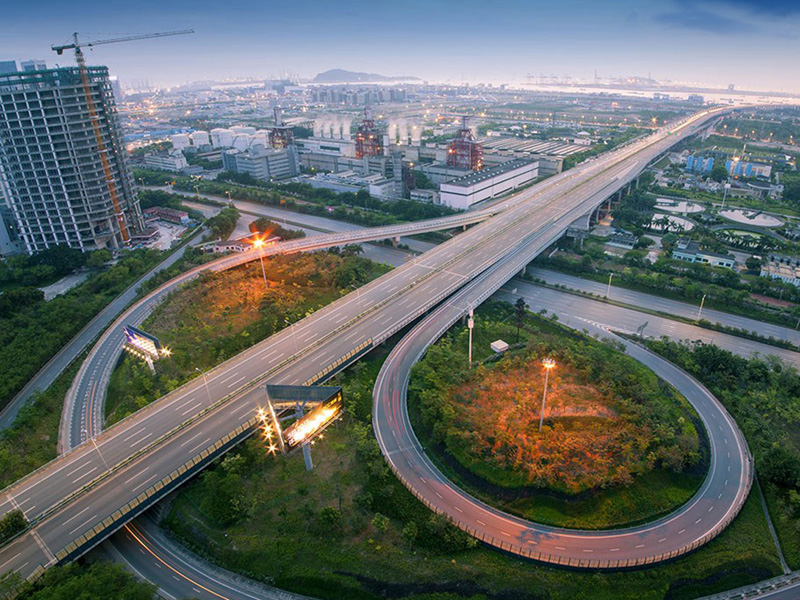 Author: Guo Wanda, Executive Vice President, CDI
Author: Guo Wanda, Executive Vice President, CDI
Editor’s Note: In the midst of the major historic opportunity presented by the establishment of the Guangdong-Hong Kong-Macao Bay Area, Shenzhen should strive to carry out development concept featuring openness, coordination, innovation and low-carbon economy, and actively integrate into the greater Bay Area.
As one of China's earliest and most successful special economic zones in China, Shenzhen is at the forefront of the country's reform and opening-up efforts. After 37 years of expansion, Shenzhen has cemented a certain position within the global industrial production system and it has become one of China's primary cities in foreign economics and trade as a considerable number of its enterprises have “gone abroad”. With the Guangdong-Hong Kong-Macao Bay Area launching, Shenzhen could form a partnership of industry distribution and city functions with other cities in the region.
The difference between the eastern and western parts of the Pearl River Delta has been widening, which greatly hampers the general growth of the area. Cooperation between cities from the eastern and western shores of the Pearl River needs to be improved with limitations in land resources and environment capacity in cities on the eastern shore. Following the construction of key infrastructure facilities like the Hong Kong-Zhuhai-Macao Bridge and the Shenzhen-Zhongshan Corridor, the connectivity between the eastern and western sides of the mouth of the Pearl River will be better. Consequently, Shenzhen will be positioned as a hub in the three city clusters of Shenzhen-Dongguan-Huizhou, Zhuhai-Zhongshan-Jiangmen, and Guangzhou-Foshan-Zhaoqing, and function as a crucial node among the three free trade zones on the two coasts of the mouth of the Pearl River. This will enable Shenzhen to obtain a larger market and a bigger influence within the Bay Area.
The Guangdong-Hong Kong-Macao Bay Area is an important center for science and technology industries, financial services sector, maritime logistics and manufacturing. It is able to fully conduct the innovation ranging from ideas, fund-raising, research and development to production and industrialization. A group of world-leading enterprises has already emerged from Shenzhen including Huawei, Tencent, ZTE, BYD, BGI Genomics and DJI, and the number of PCT international patents applications from these companies account for half of national total. In terms of innovations in policy, industry and system, Shenzhen has made explorations and accumulated experiences that can serve the whole country, for instance, deployments in strategic emerging industries and future industries, establishment of science and technology funds and governmental supports schemes, and implementation of human resources policies such as "Peacock Plan," talents accommodation program, housing and rental subsidy policy and start-up assistance for students studying abroad. These reforms and measures are valuable reference for the rest of the Bay Area.
Guangdong, Hong Kong and Macao have proposed to jointly build a world-class city cluster that is green and hospitable, so as to provide their residents with a clean, comfortable, efficient, and quality living environment and enhance the overall competitiveness of the greater Pearl River Delta. Shenzhen should incorporate low-carbon concept into urban planning, industry policies, construction facilities and transportation, and seek to establish incentive schemes and policy systems conducive to the sustainable development of the greater Bay Area.
 Author: Yang Qiurong, Research Fellow, Center for Hong Kong and Macao Studies
Author: Yang Qiurong, Research Fellow, Center for Hong Kong and Macao Studies
Editor’s Note: Integrating into the Guangdong-Hong Kong-Macao Bay Area and deepening the cooperation with other cities in the Bay Area will boost Hong Kong’s economy.
City clusters are a critical platform enhancing the national competitiveness and regional influence. New York, Tokyo and London are influential cities in the world primarily because of their competitiveness and influence. Integrating into the Guangdong-Hong Kong-Macao city cluster will effectively alleviate risks and challenges troubling Hong Kong today, such as economic imbalance and the lack of innovation. Since the economic exchanges and trade between Mainland China and the rest of world is increasingly closer and the Guangdong-Hong Kong-Macao Bay Area provides a new chance to reposition its function, Hong Kong should leverage on its unique and inherent advantages.
How can Hong Kong effectively integrate into the Guangdong-Hong Kong-Macao Bay Area? Firstly, Hong Kong should capitalize on its advantage in international resources to promote economic opening-up and reasonable industrial distribution within the Guangdong-Hong Kong-Macao Bay Area. Hong Kong should also coordinate with other cities in the Bay Area and conduct innovation in cross-border finance so as to advocate the coordinated development of the Guangdong-Hong Kong-Macao financial sector. Moreover, Hong Kong should strengthen its role as a super-connector in terms of science, technology, logistics, and capital to improve the innovation system of the Bay Area. Hong Kong should, in addition, leverage on its high-end professional services which will be beneficial for the internationalization of enterprises in the Bay Area.
 Author: Xie Laifeng, Research Assistant, Center for Hong Kong and Macao Studies
Author: Xie Laifeng, Research Assistant, Center for Hong Kong and Macao Studies
Editor’s Note: Hong Kong has always maintained strong investment and trade relations with the countries of Southeast Asia. Thus, the region is paramount to Hong Kong's participation in the “Belt and Road” initiative. Hong Kong should therefore maximize its inherent advantages and deepen its cooperation with Southeast Asia in a range of fields such as finance, professional services, free trade zones and cultural exchanges.
Hong Kong possesses distinct advantages as the critical maritime hub linking China with the rest of the world. Southeast Asian countries are major trading partners with Hong Kong in terms of commercial services, real estate, finance, manufacturing, and insurance; among Hong Kong's top ten trading partners in 2016, countries in Southeast Asia took up four spots and the summative value of trading with these nations made up more than 10% of the annual total. Hong Kong's exports to ASEAN countries climbed by 8.6% in 2016; in addition, 10% of all trade between the Chinese mainland and Southeast Asia goes through Hong Kong, and this figure is on the rise. Thus, Southeast Asia has a critical position in Hong Kong's foreign economy.
As an international finance and global asset management center, Hong Kong’s abundant high-quality capital, talent, and other resources can provide financing services for Chinese enterprises engaged in infrastructure development, industrial parks, investment, and other capital projects in Southeast Asia. In addition, Hong Kong has garnered global recognition and approval in areas such as law and international arbitration, which are likely to be beneficial for a range of “Belt and Road” projects Southeast Asia.
Hong Kong should deepen its collaboration with Southeast Asia in four principal areas. Initially, Hong Kong should fully capitalize on its advantages in the fields of finance and investment and strive to establish branches of the Asia Investment Bank and Silk Road Fund in order to provide financing for “Belt and Road” projects. Hong Kong should also combine its strengths in professional services with the technical prowess of mainland enterprises to facilitate overseas infrastructure construction and the development of industrial parks in order to jointly expand overseas markets. Hong Kong should, in addition, take advantage of its strengths as a free port, and actively participate in the Regional Comprehensive Economic Partnership (RCEP) in order to cement its key role in the Chinese-Southeast Asian trade network. Finally, Hong Kong should leverage on its geographical proximity to and cultural similarities with Southeast Asia to reinforce its human-level exchanges with the region.
 Author: Zhang Guoping, Postdoctoral Researcher, CDI
Author: Zhang Guoping, Postdoctoral Researcher, CDI
Editor’s Note: The proposal of the Amber Route has clearly defined the potential of complementary industries in the future between China and the Nordic countries, and will expand and deepen economic and trade cooperation between China and the Nordic and Arctic region.
Arctic region has weak infrastructure but the enormous potential needs. The construction of Arctic transport will bring the world a more efficient transportation system, and substantial increase for local economic opportunities. The "Belt and Road" initiative has brought a large amount of investment to infrastructure in Nordic and Arctic region. For example, the Silk Road Fund, with a $40 billion investment, has bought 9.9% shares of the Yamal liquefied natural gas project that is worth $27 billion. Meanwhile, three-dimensional traffic pattern project of Finland has begun to form through the "Belt and Road" initiative. The freight trains from China, Zhengzhou (or Xi'an) to Kouvola will be opened which will bring a new branch to the China-Europe freight train service. COSCO has also designed and built a world leading general cargo vessel to regularly sail northward and berth in Finland. In aviation, Finland Airlines currently operates six direct flights to China.
In terms of bilateral economic and trade cooperation, Nordic countries, with a range of traditional competitive industries such as shipping, agriculture, paper making and marine fishery, agree and complement with China that raises requirements in emerging industry development. Emerging advantage areas including green energy, high-end precision instruments, environmental protection, health care and creative design also attract Chinese capital to northern Europe. At present, small and medium-sized enterprises (SMEs) are the main forces in Nordic developed countries to absorb social employment and promote technological innovation, with strong technical superiority and innovative ability. These enterprises are lack of funds and markets in exploiting the overseas market while China's capital and markets just make up such demands. By encouraging China’s financial institutions and environmental technology, bio-pharmaceutical enterprises to issue bonds and test venture investment in Nordic countries, we may explore and promote the SME Development Fund to provide financing, market information sharing and other facilities for SME cooperation between the countries, and give play to the role of Silk Road Fund.
More...
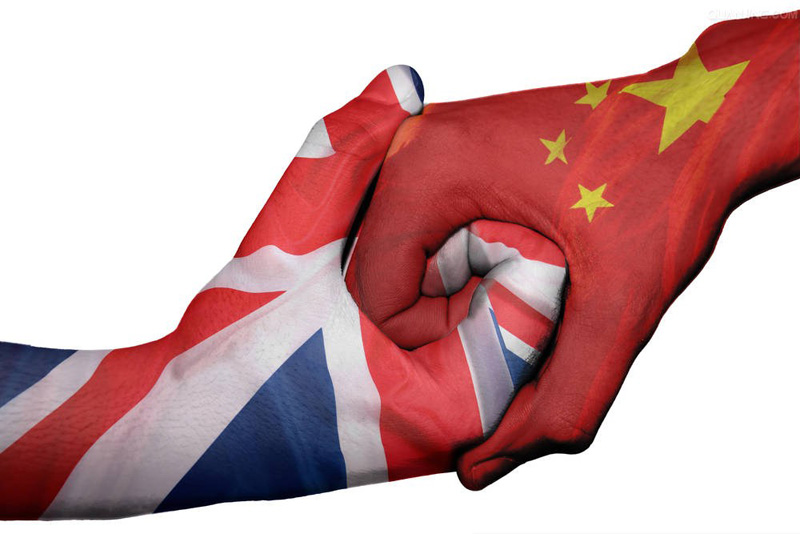 Author: Zhang Guoping, Postdoctoral Researcher, CDI
Author: Zhang Guoping, Postdoctoral Researcher, CDI
Editor’s Note: Britain's participation in the "Belt and Road" Initiative is an important opportunity to open the Chinese domestic market and third country markets. China and Britain are highly complementary in trade structure. By strengthening the docking of development strategies, and promoting mutually beneficial cooperation in trade, investment, finance and energy, they may lay a solid foundation for the "Belt and Road” cooperation.
The "Belt and Road” initiative will create massive RMB denominated assets in overseas areas, and promote the internationalization of RMB. The huge financing requirements for projects along the lines will prompt the issuance of offshore market dim-sum bonds and other types of bonds. London can provide diversified international investors for Chinese enterprises and customers, actively involve global capital markets in the process, and connect capital pools of different currencies, so as to establish a sustainable financing mechanism for the offshore market. For instance, China’s policy banks and international multilateral development agencies may take advantage of offshore markets such as London, and increase issuance of long-term bonds related to the "Belt and Road", to improve the yield curve, expand the development of the secondary offshore bond market, and improve the “Belt and Road’s" long-term financing mechanism.
In terms of Britain, the Northern Economic Growth Area strategy can completely dock the "Belt and Road” initiative, to share China’s capital, infrastructure construction technology and experience, and realize in-depth complementation between the two countries with regards to cooperation and investment. Northern England has become increasingly important to the economy of the entire UK. Many large multinational groups are investing for development there. It will quickly become a global innovation enterprise investment center. China's development path and infrastructure experience may provide high-speed rail technology and finance, and stimulate Northern England’s economic vitality.
In the field of cooperation with a third country, British companies may complement their Chinese counterparts with technological advantages on international infrastructure projects. They may also carry out international cooperation in project management, financing, design, planning and environmental protection. Britain could serve as a support point at the western end of the "Belt and Road" with its expertise in professional services. The advantages of engineering design and consulting, financial services, and legal services will provide significant opportunities for the United Kingdom’s professional services to participate in the infrastructure projects.
Following Brexit, Britain’s export situation has worsened. Accelerating the development and operation of China-Europe freight trains, and strengthening Britain's engagement with other global trading partners, will help British products to go global.
 Author: Hu Zhenyu, Director, Department of Sustainable Development and Maritime Economy, CDI, Zhou Yuyi, Research Associate, Department of Sustainable Development and Maritime Economy, CDI
Author: Hu Zhenyu, Director, Department of Sustainable Development and Maritime Economy, CDI, Zhou Yuyi, Research Associate, Department of Sustainable Development and Maritime Economy, CDI
Editor’s Note: The Pacific Island countries are faced with significant environment pressure and pressing needs for development at present. While growth in global trade has slowed down, development in trading between China and the Pacific Island countries has developed rapidly. Thus, China should strengthen research on the Pacific Island countries so as to promote extensive, efficient and pragmatic collaborations with them.
The Pacific Islands, including 27 nations and regions in the Pacific Ocean except Australia and New Zealand, is a part of the 21st Century Maritime Silk Road. Affected by natural disasters and increasing temperature, the Pacific Islands are exposed to significant environmental pressure and pressing needs for development. China's proposal of establishing a “community of human shared destiny” is well-received by the island nations.
Due to disparity in resources, uneven developments exist among the Pacific Island countries. Although Papua New Guinea holds comparative advantages in territory size, total economic output and natural resources, its GDP per capita remains at a relatively low level due to outdated technology and equipment. With an abundance of tourism resources and accessible transportation, Fiji has emerged as a key tourism spot in the Pacific. Other island countries such as Niue, Cook Islands and Palau also post GDP per capita above USD 10,000.
Though growth in global trade is currently bogged down in a slump, trading between China and the Pacific Islands has shifted into high gear, with total volume of import and export surging from USD 4.3 billion to USD 7.5 billion, a jump of 73% and an annual growth rate of approximately 15%. Main exports goods to the island countries include machineries, electronics, automobiles, ships and light industrial products, while items imported to China from the Pacific Islands are comprised mainly of fish products and natural resources.
China's primary trade partners in the Pacific Islands region are Marshall Islands, Papua New Guinea and Solomon Islands. In 2015, trade volume between China and the three major Pacific trading partners amounted to USD 6.7 billion, accounting for over 90% of trade between China and all Pacific Islands.
In addition, due to Fiji's strategic importance, its trade relations with China has blossomed and Fiji is now China's number four trade partner in the Pacific Islands region. Since the proposing of the Maritime Silk Road concept, economic and trade development between China and the Pacific Islands has been climbing by leaps and bounds.
Yet, obstacles are in the way of deeper cooperation between China and the Pacific Islands. It would be necessary for China to conduct further research on the politics, economy and culture of the Pacific Island countries, so as to promote extensive, efficient and pragmatic collaborations with them.

Author: Fan Gang, President, CDI
Editor’s Note: Although the real estate market has gone through a tortuous development process, there still remains a huge potential. So how can the real estate industry realize sound development?
Why is there high housing price? Because there is high price of land auction and the land price is derived from the real estate price. The expected housing price in the area in the future is higher than the present will lead to higher land prices. If the government does not interfere and lets the market continue to overheat, it may lead to a crisis. So how can the real estate industry realize sound development?
Firstly, in terms of demand, an automatic stabilizer, namely, house property tax is needed. If there is an automatic stabilizer for the demand side, administrative measures are not necessary since taxes and leverage can automatically play their roles in stabilizing the real estate industry.
Secondly, in terms of supply, correct the deviation of the urbanization strategy. Current policies mainly focus on encouraging the development of small towns and cities and limiting the development of large cities and it causes excessive land supply in small cities. However, over the past three decades, most of the population migrated to large cities, indicating that our land policies have not kept pace with the law of population migration and urban development.
Thirdly, to solve the real estate problem from the root is to solve the issues of strategies and systems rather than to ascribe the real estate problem to monetary issues. We should change some of the past strategies and policies and gradually withdraw administrative measures to promote the steady and healthy development of the real estate market.
 Author: Wang Guowen, Director, Department of Logistics and Supply Chain Management, Zhang Yiju, Research Associate, Department of Logistics and Supply Chain Management
Author: Wang Guowen, Director, Department of Logistics and Supply Chain Management, Zhang Yiju, Research Associate, Department of Logistics and Supply Chain Management
Editor’s Note: The mutual recognition and alignment of the standards for product and services at national strategic level and in the form of bilateral agreements is crucial to ensuring successful construction, implementation and operation of China-Belarus Industrial Park. As they participate in the Belt & Road projects, Chinese enterprises should participate in the formulation of policies, regulations, standards and processes in the host country of the projects, and actively promote the alignment of China’s standards with the local standards in the host country.
In recent years, major projects of China-Belarus cooperation have been pushed forward in the process of Belt & Road construction. China-Belarus Industrial Park is a signature project in China and Belarus’ joint effort to build the Silk Road economic belt. According to planning objectives, China-Belarus Industrial Park will attract over 200 high-tech enterprises and create 120 thousand jobs, as it is integrated into a new international airport city with a population of 200 thousand.
The major projects of China-Belarus cooperation have won policy support from the government of Belarus, providing favorable conditions for China-Belarus cooperation. However, the lack of mutual recognition and alignment of China’s standards and the local ones in Belarus has hindered the development of cooperation projects between the two countries. The lengthy certification process has severely affected the schedule. Moreover, the lack of alignment in service standards between China and Belarus poses a potential policy risk, potentially reducing the efficiency of construction and operation of the park. In addition, the lack of mutual recognition and alignment in management processes has added unnecessary daily operation costs for Chinese businesses.
The practical experience of China-Belarus Industrial Park and other cooperation projects testify to the necessity of standard alignment between China and the host country at a national strategic level in a bid to raise the overall efficiency. Here are three proposals: first, incorporate the mutual recognition of standards into bilateral cooperation, and sign detailed bilateral agreements to fully align China’s standards and the local standards. Second, conduct research on the development strategies, laws and regulations, standard systems and access management systems of countries and regions along the belt and road, so as to provide intellectual support for Chinese businesses going global. Third, encourage Chinese businesses and institutions to participate in the drafting of international standards, and work towards higher levels of international standardization.

